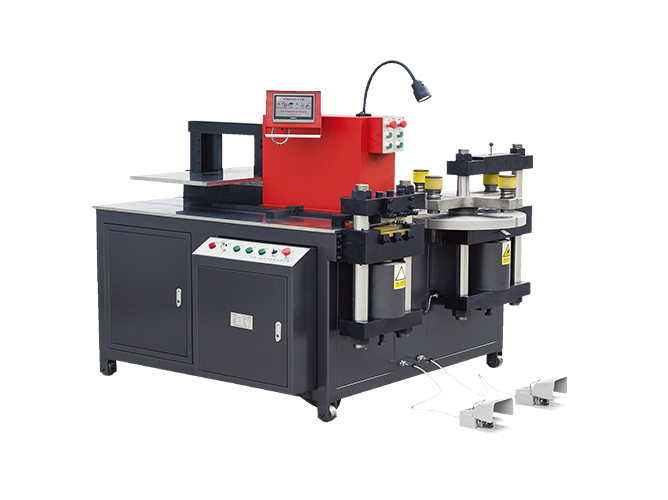The Benefits of Automating Your Busbar Fabrication Line
In an increasingly competitive and technology-driven industrial landscape, the automation of production lines is no longer a luxury—it’s a necessity. Nowhere is this more evident than in the electrical manufacturing industry, particularly in the fabrication of busbars. As the demand for efficient and high-quality electrical systems continues to rise, manufacturers are turning to automation to meet modern standards and customer expectations.
Automating your busbar fabrication line offers a range of benefits, from boosting productivity to enhancing safety and quality. In this comprehensive guide, we explore the advantages of automation and how it can transform your busbar production operations.
Busbar fabrication involves processes such as punching, shearing, bending, chamfering, embossing, and assembly of copper or aluminum conductors. Traditionally, these processes required manual labor, resulting in longer lead times, variability in quality, and increased labor costs.
Automation streamlines and standardizes these tasks using CNC machines, robotic arms, and integrated software, enabling rapid, repeatable, and highly accurate results. Automated busbar systems are now widely used in switchgear manufacturing, transformer production, and electrical cabinet assembly.
One of the most immediate and measurable benefits of automation is improved production speed. Automated Busbar processing machines can perform multiple operations without repositioning or human intervention, significantly reducing cycle times.
Simultaneous punching, bending, and shearing
Continuous material feed and stacking systems
Reduced downtime and idle periods
This leads to faster order fulfillment and greater responsiveness to customer demands.
Automation eliminates the human error factor, ensuring each busbar is fabricated to exact specifications. CNC systems follow programmed instructions with pinpoint accuracy, maintaining tight tolerances across large batches.
Repeatability within ±0.2mm or better
Accurate positioning during complex bends and punches
Uniform finish and edge quality
This consistency improves the reliability of final electrical assemblies, reducing failure rates and enhancing customer satisfaction.
Skilled labor shortages are a growing challenge in the manufacturing sector. Automating your busbar line reduces the need for manual operators, lowering labor costs and mitigating the risks of staffing shortages.
Fewer operators required for machine oversight
Reduced training and onboarding times
Lower incidence of workplace injuries and fatigue
This allows your workforce to be redeployed to higher-value tasks like quality control, design, or logistics.
Automated systems maintain consistent quality across every unit produced. With digital input and control, there's less variation in output compared to manual methods.
Integrated inspection tools and sensors
On-screen simulations before execution
Automated rejection of non-conforming parts
The result is a better-quality product with fewer defects and returns.
Speed to market is a competitive advantage. Automation enables just-in-time production, reducing inventory needs and increasing manufacturing agility.
Faster prototyping and revisions
Real-time change implementation
Scalable production with minimal setup changes
This makes it easier to respond to new orders, product updates, or customer design changes.
Modern automated systems are equipped with digital interfaces that collect and analyze production data. This enables proactive decision-making and continuous improvement.
Real-time monitoring and dashboards
Predictive maintenance alerts
Integration with ERP and MES systems
Data transparency enhances traceability, improves production planning, and supports regulatory compliance.

Automated machines are designed to combine multiple functions in one unit, minimizing the space required for a full production line.
Compact, integrated machines
Reduced need for manual workstations
Streamlined material flow paths
This allows more efficient use of factory floor space and supports lean manufacturing principles.
Safety is a top priority in industrial settings. Automation reduces direct human interaction with heavy or sharp materials, minimizing injury risks.
Enclosed processing stations with interlock systems
Emergency stop and overload protection
Programmable operation parameters to avoid misuse
With fewer physical interactions, operators are protected from repetitive strain and accidental injuries.
Automated machines are increasingly energy-efficient, consuming less power while producing higher output.
Lower energy usage per part produced
Reduced scrap and rework
Optimized resource utilization
This supports corporate sustainability goals and reduces operational costs.
Automation prepares your manufacturing process for future growth and technological advancements. Modular and upgradeable systems allow easy expansion.
Add-on modules for new capabilities
Software upgrades for evolving standards
Compatibility with future materials and designs
Investing in automation today helps ensure long-term competitiveness in an evolving market.
automated busbar fabrication is widely applicable across various industries:
Power distribution and control panel manufacturing
Renewable energy (solar, wind) infrastructure
Electrical vehicle charging stations
Marine, aerospace, and transport systems
Heavy industrial machinery and mining equipment
Whatever the sector, automation enhances reliability, quality, and efficiency.
Though the initial investment in automation can be significant, the long-term savings and productivity gains typically result in a fast return on investment.
Lower labor and material costs
Reduced defects and rework
Increased output and market competitiveness
In many cases, ROI can be achieved within 12–24 months, depending on production volume and operational efficiency.
Before transitioning to an automated busbar line, consider:
Production volume and part complexity
Available factory space and layout
Budget and financing options
Training and support resources
Working with knowledgeable partners and involving cross-functional teams in the planning process is critical to success.
Automating your busbar fabrication line offers a strategic advantage in today’s electrical manufacturing environment. From improved efficiency and product quality to labor cost reduction and enhanced safety, the benefits are numerous and measurable. Whether you’re aiming to scale operations, enter new markets, or simply increase profitability, automation is a powerful tool to help you achieve your goals.
By choosing the right automated solution and aligning it with your production needs, you position your business for long-term success in a competitive and fast-changing industry.
This website uses cookies to ensure you get the best experience on our website.
Comment
(0)